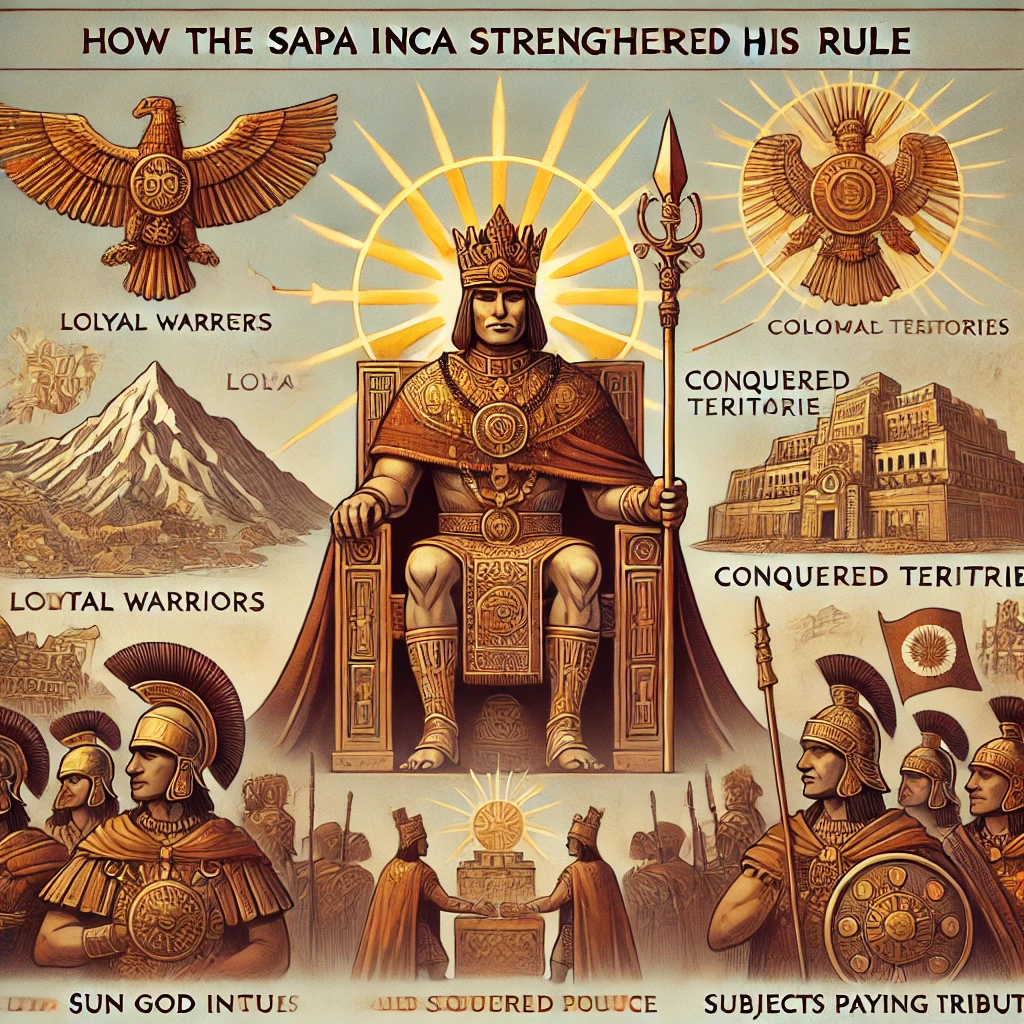Explore how territorial expansion, centralized governance, and economic reforms shape powerful nations and their influence in today’s world.The Sapa Inca, the supreme ruler of the expansive Inca Empire, was a master strategist who solidified his position through a series of calculated initiatives. From the breathtaking peaks of the Andes to the lush valleys below, his reign saw not just the consolidation of power but an era of innovation and transformation. By expanding territorial control, the Sapa Inca crafted a formidable empire that stretched over diverse landscapes and cultures. Centralizing political administration further reinforced his authority, allowing for more efficient governance and communication across vast distances. Additionally, the implementation of economic reforms laid the groundwork for a thriving society, ensuring the stability and prosperity of his people. In this blog post, we will explore the key strategies employed by the Sapa Inca to strengthen his rule and embed his legacy in the annals of history.
Expanding territorial control
The Sapa Inca, as the supreme ruler of the Inca Empire, employed a variety of strategies to expand territorial control. This expansion was crucial for consolidating power and fostering a sense of unity among the diverse populations under Inca rule. One of the primary methods was through military conquests, which allowed the Inca to dominate surrounding territories and incorporate them into the empire.
In addition to military power, the Sapa Inca utilized diplomacy to negotiate alliances with neighboring tribes. By offering gifts and promising protection, the Sapa Inca could secure the loyalty of these tribes without resorting to warfare. This approach not only minimized bloodshed but also facilitated the integration of new territories into the broader societal and economic framework of the Inca Empire.
Furthermore, the establishment of a well-organized system of administration in newly acquired territories helped to maintain control. The Sapa Inca appointed local leaders who were loyal to him, ensuring that his decrees were carried out efficiently. This governance structure enabled the Inca to solidify their presence across vast lands, creating a lasting impact that supported the empire’s widespread influence.
Centralizing political administration
The Sapa Inca, as the supreme ruler of the Inca Empire, implemented a series of strategies to centralize political administration. This involved not only consolidating power but also creating a robust bureaucracy that ensured efficient governance across vast territories. One of the cornerstones of this centralization was the establishment of a hierarchical administrative structure that allowed the Sapa Inca to exercise direct control over his subjects.
To facilitate central authority, the Sapa Inca appointed loyal officials, known as curacas, to govern localized regions. These curacas acted as intermediaries, enforcing the Sapa Inca’s policies and collecting tribute on behalf of the empire. This system not only reinforced the Sapa Inca’s power but also integrated disparate communities into a cohesive political unit.
Moreover, the Sapa Inca instituted administrative divisions, known as suyus, which divided the empire into manageable sections. Each suyu was governed by appointed officials who reported directly to the Sapa Inca. By streamlining the administration into these divisions, the Sapa Inca ensured that there was a consistent application of laws and policies throughout
Implementing economic reforms
The Sapa Inca understood that to secure his rule and maintain a stable empire, he had to focus on economic reforms. These reforms were essential not only for the prosperity of the empire but also for consolidating his power and influence among the various ethnic groups and territories under his control.
One of the key aspects of these economic reforms was the introduction of a state-administered economy. The Sapa Inca established a system where the government controlled the distribution of resources, such as land, labor, and goods. This approach ensured that all subjects paid tribute to the state and received necessary support in return. The economic structure was designed to promote social welfare and reduce competition among the different groups by fostering interdependence.
Additionally, the implementation of carrying out major infrastructure projects facilitated trade and communication across the empire. The famous Inca road system, which spanned thousands of miles, allowed for efficient movement of goods and resources. This network not only enhanced trade but also facilitated the quick mobilization of military forces when necessary, thus further solidifying the Sapa Inca’s grip on power.
Frequently Asked Questions
The Sapa Inca was the emperor and the highest-ranking ruler of the Inca Empire, believed to be a descendant of the sun god Inti.The Sapa Inca employed a variety of strategies, including military conquests, strategic marriages, and the establishment of a complex administrative system to manage the empire.The Sapa Inca maintained control through a network of local leaders, known as apus, who were loyal to him and facilitated governance at regional levels.Religion played a crucial role in legitimizing the Sapa Inca's authority, as he was considered a divine figure with a direct connection to the gods.The Sapa Inca invested in impressive infrastructure projects, such as roads and agricultural terraces, which improved communication, trade, and military movement throughout the empire.The ‘Mita’ system was a mandatory public service system that required able-bodied citizens to work on state projects, which helped the Sapa Inca mobilize labor and resources effectively.The Sapa Inca integrated conquered peoples by allowing them to maintain some of their cultural practices while also imposing Inca customs and language, fostering loyalty and reducing resistance.


